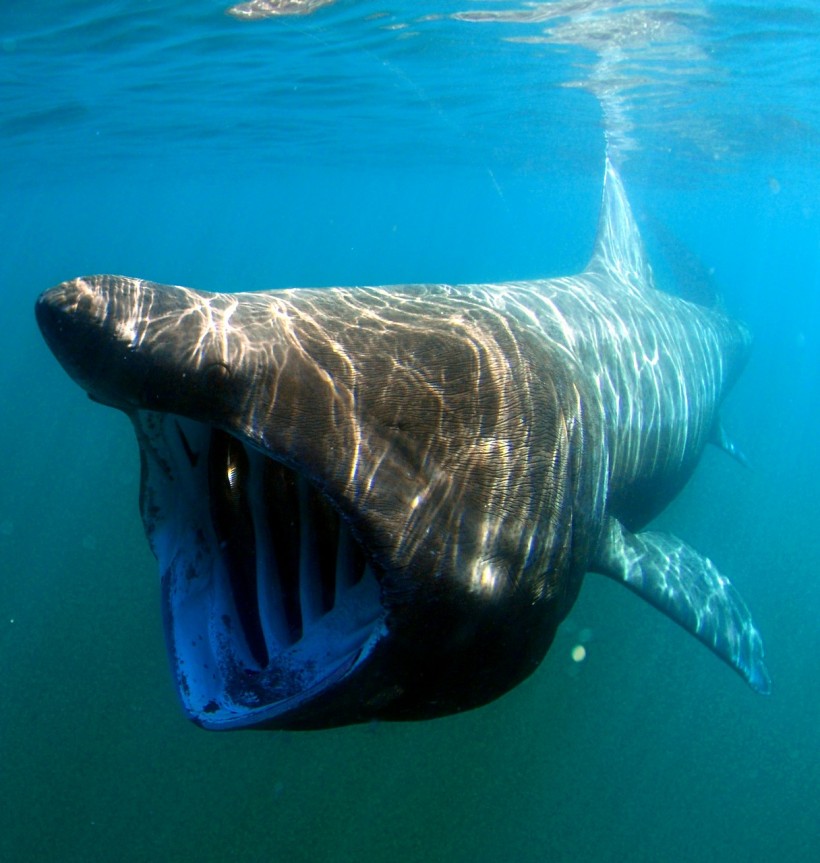Alex Brace was out at sea with his friend on Wednesday and was sailing off the tourist spot in Tenby, Pembrokeshire. They were shocked to see a fin of a huge fish looming in front of them, like a scene from the film Jaws, Metro reported. They were able to capture their encounter with the huge fish, which turned out to be a shark lurking around the bay.
Brace, who is a member of the local sailing club, thought it would only be a routine sail that night but unexpectedly saw the shark while returning to the North Beach in Tenby. They initially thought the shark was a catfish, but it was too big and it definitely did not look like a dolphin.

Basking shark
Basking Shark Lurking in Welsh Beach
Talking to WalesOnline, Brace said it was around 8:00 p.m. when they returned to the harbor and spied the large shark swimming in the shallow water. He and his friend could only see the fins of the massive fish in the water and suddenly realized it was a shark.
He added that the shark was swimming near them for about two to three minutes before it started to head off towards Saundersfoot. They estimated that the shark could be about 12 feet long because the distance between its fins could be around five to six feet in length. When he showed the video to other people, they identified it as a basking shark considering the way it moved.
According to LAD Bible, basking sharks have been previously spotted across the sea near England and on the west coasts of Wales and Scotland. The recent sighting is unique since they are not usually spotted in Tenby. Brace confirmed this and said it was the first time he saw a basking shark despite routinely spending time in the area.
He added that they only usually see porpoises and seas in Tenby but generally not sharks. Other sailors who also sail in the same area said that seeing a basking shark is rare, probably because the water is not more than waist-deep.
ALSO READ: Ancient Sharks Loved to Eat Noses of Sperm Whales Due to High-Fat Content, Fossil Records Reveal
Are Basking Sharks Dangerous?
The basking shark (Cetorhinus maximus) is the second-largest living fish and shark after the whale shark. According to National Geographic, their name roughly translates to "great-nosed sea monster" in Greek. They got their name because people in the past thought the shark was basking in the sun as they swam near the shallow waters.
Despite their menacing look with a gaping mouth of six rows of teeth in its upper jaw and nine rows below, basking sharks are generally placid and totally harmless.
They are one of the three filter-feeding shark species that eat zooplankton and swim with their mouth wide open to take in water and filter out plankton using their gill rakers. Scientists believe that basking sharks use their teeth during mating as they do not use them for feeding.
They are slower than other shark species with only a speed of 2 miles per hour. Unlike the two other large filter-feeding sharks in the world, basking sharks are passive feeders and do not actively suck in water.
Basking sharks are highly migratory shark species and usually travel to the nutrient-rich waters on the western coast of Scotland, Isle of Man, northeastern US, and Canada during spring and winter. They are rarely seen in the winter since they stay in deep waters and do not hibernate as previously thought.
RELATED ARTICLE: Basking Sharks Migration Habits Explained: Where They Go During Winter and Summer
Check out more news and information on Sharks in Science Times.














